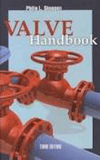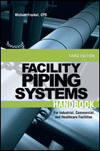State of the industrial PVF industry: The perfect storm
PVF heavy-weights discuss top challenges facing industrial sector.

The industrial PVF sector is facing a set of challenges that market experts describe as “the perfect storm.” Top concerns among pros in the industrial sector include commodity price increases, tariffs and trade disruption, freight inflation, fleet shortages and — of course — the ongoing lack of skilled labor.
These factors are working together to create the major disruption the PVF industry is facing.
In terms of overall industrial projects, industry pros are feeling an uptick and increases in projects to bid, but the hurdles mentioned above are creating a challenging environment to keep projects moving.
Daniel Hogge, vice president of Wolseley Industrial Group points out that economic recovery is fueling interest in industrial projects. “While new projects begin to emerge sporadically, large projects in the metal mining and steel industries accelerated. This trend is powered by increased commodity prices in those specific sectors. We have also seen an uptick in the bio-tech and renewable fuel markets,” he says. “We have seen multiple large projects delayed due to concerns around commodity price inflation and global supply constraints. As people begin to feel secure again, we expect project work to pick back up.”
Howard Traeger, president and CEO for Miami, Florida-based international distributor Traeger Brothers and Associates, agrees, saying some markets are recovering while others are slower. “Traeger Brothers serves multiple markets, so we have seen an uptick overall, however the critical midstream and downstream markets have been slower to recover,” he says. “It’s our belief that the majors and the midstream players are reprioritizing projects. Our budgetary requests for quotations have seen significant increase.”
Justin Dunscomb, president of Affiliated Distributors’ Plumbing and PVF divisions, notes the industrial PVF sector experienced a strong second quarter overall, compared to one year ago. “This year started slow, but we’ve seen things on the PVF side pickup, specifically in the tech and medical markets,” he says. “Obviously we are comparing to a weaker year (2020), but even with supply challenges we expect to see continued pick up in terms of projects.”
While a surge in projects is great, Greg Leidner, president and CEO of master distributor Merfish United, says labor concerns are standing in the way. “We are seeing some uptick in projects, but like all projects, one constraint that is hindering progress is labor shortages,” he says. “Even with wage increases, customers are reporting that they are not able to be fully staffed because they simply can’t hire enough qualified people.”
Commodity concerns, anti-dumping and tariffs
Price increases among oil and gas, stainless steel, nickel and other materials are a top frustration within the industrial PVF market. Restraints on international trade and increases tariffs are making it harder for manufacturers to get materials needed from overseas.
Alan Lipp, executive vice president for Merit Brass, says daily collaboration with supplier partners is key. “I’ve been part of this industry for nearly 40 years and have never seen anything like this. The supply and cost containment challenges are multi-pronged and are literally feeding on themselves,” he says. “We are intently focused on everything within our direct sphere of control and collaborating on a daily basis with our key suppliers and service providers to minimize the short and mid-term impact to our distributor customers. Our single highest priority remains providing them with the very best fill-rates possible without compromising on our quality standards.”
Hogge says in order to work through price fluctuations, it’s essential to have multiple sources for major commodities.
“Like all businesses in the IPVF industry, we feel the impact of tariffs, anti-dumping and commodity inflation during the last year. As a result, entire countries exit specific commodity groups altogether. The ripple effects immediately generate pronounced price fluctuations and soon after causing potential availability concerns,” he says. “However, it is essential to have multiple sources of supply for major commodities and the ability to assure that only quality products enter your supply chain appropriately.”
According to Lipp, anti-dumping investigations are on the rise. “Anti-dumping investigations are becoming more and more prevalent around the world and several countries are taking a much more nationalistic approach,” he says.
Actions taken by Chinese authorities and the Russian government are playing a huge role in the price increases the industrial PVF sector is experiencing.
“Chinese authorities are changing policies to reduce carbon emissions, which is creating a ripple effect across the globe as they remain the epicenter for supply and costs of myriad PVF materials and products,” Lipp explains. “Additionally, China has cancelled export rebates for a broad array of steel and stainless steel products. There is speculation they will also impose export taxes on those same products.”
According to Steel News, stainless steel prices in China continue to rise, as purchasers aim to take advantage of current prices ahead expected increases in nickel prices. China has cut steel production in many areas — an effort to reduce emissions — meaning the available steel is even higher in demand.
Additionally, in mid-June, the Russian government announced export taxes will take effect on Aug. 1 for most steel products and aluminum, copper and nickel.
Traeger points out these increases make it extremely difficult to provide quotes. “Our ability to provide quotations for major project work in particular has been drastically impacted,” he says. “Many of the large projects are subject to not only price changes between budgetary quotations, but more often than not, availability issues. We — like other distributors — are paying attention to market product trends, the production schedules of our key manufacturer partners and status of transportation capabilities.”
Mike Abeling, president and CEO of California-based distributor Consumers Pipe and Supply, says distributors are weary of being left with costly inventory. “Tariffs are a worry for me. The government could drop them at any time leaving us with high priced inventory,” he says. “Although, it does not look like the Biden administration wants to forgo that income stream, so the likely hood of that happening is currently small.”
Leidner points out that although current trends are worrisome, price fluctuations have been affecting the PVF sector for years. “Pricing fluctuations have been a part of the pipe business for many years. Prices go up and prices go down on the basis of news such as the dollar/euro, China’s demand, Chilean strikes, etc.,” he says. “One would have to be a voracious consumer of news from around the world to be able to predict pricing in steel, copper and PVC. What we recommend to our customers is that they focus on operating their business, and not try to time the pipe markets. Buy smaller quantities, turn inventory frequently and don’t bear the risk of falling pricing.”
Freight and fleet
Equally as concerning as price fluctuation, the ability to transport product is item No. 2 in the perfect storm.
Stateside, the trucking industry is facing significant shortages. According to DAT Freight and Analytics, the capacity shortage in the trucking market continues as truck postings in May 2021 were down nearly 15% YoY.
Jacob Hawkins, senior pricing manager for Transportation Insight, says fleet carriers have been cautious since the 2007-2008 recession. “Since that time, fleet carriers are cautious not to overextend themselves,” he says. “Carriers are also facing a driver shortage. I wouldn’t call it a crisis yet, but there are definitely concerns surrounding the number of drivers available.”
Much like the PHCP industry, driver shortages are caused by a high number of retirees. Hawkins notes the country estimated that approximately 36,000 drivers were needed pre-COVID, and since the pandemic, the shortage has grown to about 61,000.
“Trucking is essentially competing with other blue collar jobs and trades — plumbing, construction, etc. — to gain workers,” Hawkins points out. “It’s all about changing the perception of what a truck driver is and being loud about the ability to make a great living. Carriers, as we speak, are raising starting wages and increasing benefits packages to both attract new drivers and keep the ones they have.”
Hawkins adds that carriers are doing the unheard of by paying drivers some salary while they aren’t on the road. “This helps drivers feel like they don’t have to be on the road in order to be making money,” he says. “This helps with both the lifestyle stigmas surrounding trucking and the safety aspect of driving by limiting the pressure to be constantly on the road.”
As domestic carriers work to address driving shortages, international container shortages also present challenges for the industrial PVF market.
“Incoming containers to the Port of Los Angeles continue to see delays,” Abeling points out. “During the height of the delays, 40-50 ships were moored offshore for 2-3 weeks waiting for a place at the dock to unload. Getting containers for shipping anyplace in the Pacific Rim is also a problem sometimes waiting 30 to 60 days for the container to load.”
Leidner says the freight challenges are constant. “As a master distributor of piping products, Merfish United consistently faces supply chain and freight challenges when we buy material,” he says. “We try to minimize our customers’ exposure to these challenges by beefing up our inventory. The better we execute, the less wholesaler-distributors are exposed to the freight challenges our economy has been experiencing.”
Distributors and manufacturers agree that increased communication is key to working through freight challenges. “Higher Freight costs, shipping increases, availability are all factors that impact our business,” Traeger says. “Our first priority offsets in this situation are deep dives into freight analysis, improved timing, coordination and scheduling with our clients. High level communications with our manufacturing partners concerning the many challenges that they now face and dynamic inventory positions at all of our locations.”
Hogge emphasizes the importance of strong partnerships when facing freight challenges head-on. “We are feeling the effects of transportation across every step of the logistical supply chain. Flatbed access and rates are incredibly challenging,” he says. “Distributors’ best strategy to succeed in this challenging market and time, is partnering with the right vendors and manufacturers. The right partner will have a clear understanding of how a particular business is impacted regarding global supply chains and can forecast potential issues as soon as possible. Your commitment should be the near-term focus and utilizing your current inventory and resources to support your current contract customers.”
Getting the job done
Although the perfect storm continues to cause headaches for industrial PVF stakeholders, demand is strong and project pick-up means each party must do their part to work through disruption.
Lipp urges distributors to keep more inventory and increase service levels. “While many distributors have taken advantage of enhanced efficiencies throughout the global PVF channel over the years and carried minimal inventory levels, the current logistical issues have made it necessary to rethink those strategies,” he explains. “Virtually every link in the supply chain has been disrupted to a significant extent and it appears as if these difficulties will remain with us for quite some time. Distributors can mitigate these challenges by keeping more inventory to improve their service levels and avoid multiple freight charges and handling costs.”
Many distributors report increasing inventory as the no. 1 strategy to prepare for uncertain market conditions, but with the current shortages, it’s hard to bulk up inventory levels.
“Keeping our pipeline full of material is a major challenge,” Abeling says. “Everything is going up in price so anything you buy today is on sale. The challenge is the backside of this wave and when will that come.”
Dunscomb points out that manufacturers are facing challenges that slow production down. “It’s challenging to keep up with the surge in demand with all of the factors at play,” he says. “The labor shortages, along with operating in a COVID-safe environment can slow some manufacturing facilities down.”
To continue to grow business during this challenging time, Dunscomb urges distributors to diversify their product lines and take advantage of resources available to them.
“The AD Education Center helps our members' teams better understand their supplier partners,” he says. “It’s a place for suppliers to share different education and training strategies. As a whole, we are aiming to help our companies become more efficient; whether that’s through our AD eCommerce program or other technology, we want to provide resources that help companies get the job done more effectively while they’re working through this major disruption.”
Dunscomb points to another resources distributors should take advantage of, the American Supply Association economic webinars with Dr. Chris Kuehl, which update the PHCP-PVF supply chain monthly on important economic factors and recovery.
Leidner says Merfish United strategy to work though these challenging times is to focus on current customers, rather than new business. “One of the biggest levers we have implemented to help support our customer base during supply chain issues is to NOT to take on many new customers,” he explains. “We decided early on that we need to be able to support those customers that have supported Merfish United, even if it means walking away from some business from new customers. This has helped us maintain exceptionally strong fill rates through challenging times.”
Traeger says the company’s strategy varies from market to market, but company culture shines through, especially during tough times. “Our culture of honesty, respect and professionalism will be even more visible in times of disruptions in the industry. Our strategies may vary from location to location and market segment to market segment, but we strongly believe that being well trained and prepared to adapt to the changing environment, is critical.”
Hogge agrees, saying willingness to change is vital. “One of the many things that we’ve learned from the last 15 months is the importance of being nimble and adjusting to change,” he says. “Every decision we made during and after the pandemic was and remains a ‘First in Safety’ decision. We are constantly striving to be an employer of choice and help our associates realize their personal aspirations while serving our customers, supporting our product strategy and maintaining the business.”
Distributors all agree that transparency is key when dealing with long lead times, price increases and disruption.
“It comes down to communication,” Dunscomb says. “I hear from a lot of distributors that as long as they know the lead time up front, they can work with it. And in turn distributors need to be transparent with their customers; give realistic expectations for what will happened and when.”
No matter what, the PVF industry always leans on relationships to get through. “Those of us throughout the channel who engage in relationships built on trust will weather this Perfect Storm more effectively,” Lipp says. “This is the moment when we will learn if there is real substance to the relationships and a genuine commitment to working closely together to smooth out the effects of the disruption we are all experiencing.”
Looking for a reprint of this article?
From high-res PDFs to custom plaques, order your copy today!









